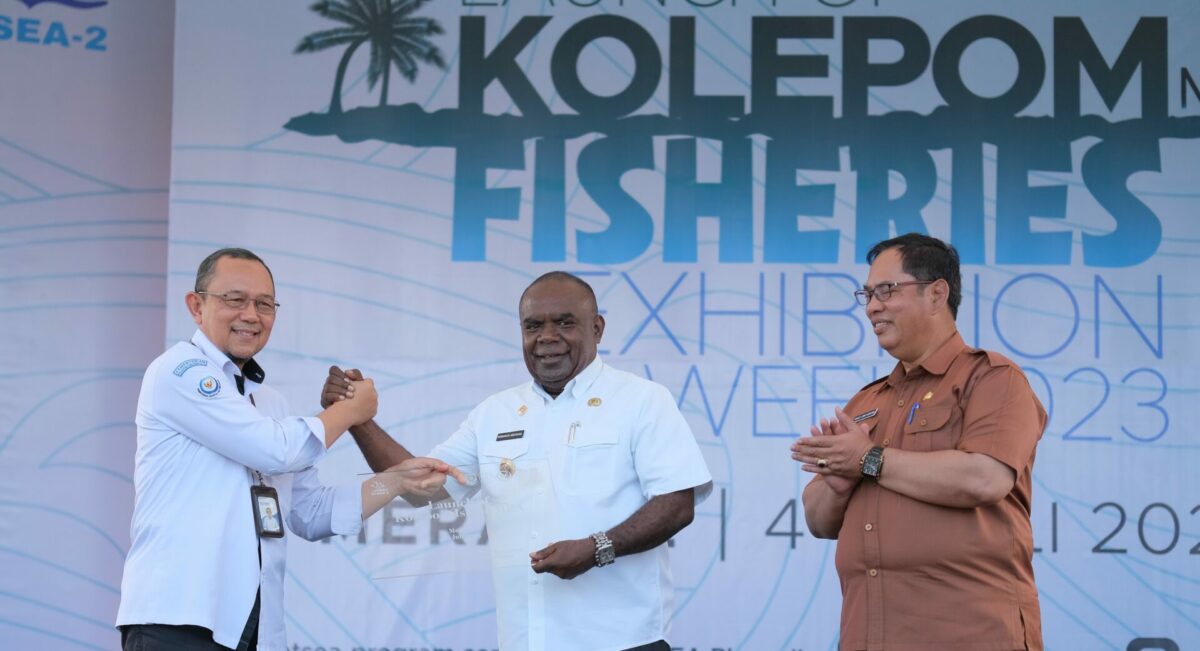South Papua Province officially launched its first Marine Protected Area (MPA) on 4 July 2023, in Merauke on Kolepom Island, established in January 2023 under the authority of Minister of Marine Affairs and Fisheries Decree No. 5 of 2023. This significant decision was the result of a collaborative effort involving various partners, including the Indonesian Ministry of Marine Affairs and Fisheries (MMAF), UNDP Indonesia, and local governments, with the aim of supporting Indonesia’s Blue Economy strategy.
More than 300 people attended the launch event, including representatives from MMAF, UNDP Indonesia, local government officials, academics, community members, and local fishermen. This event was part of the Fisheries Exhibition Week in South Papua Province, held at the Fisheries Department Office in Merauke District.
The event aimed to raise awareness about sustainable marine resource conservation, especially among small-scale fishermen and those involved in fisheries in Merauke District. It also highlighted how designating Kolepom Island as an MPA aligns with Indonesia’s commitment to establish 30 million hectares of marine conservation areas by 2030, as set by the South Papua Province Government.

Head of Merauke District, during the opening ceremony
The launch event began with a welcoming address from Agustinus Joko Guritno, First Assistant to the Secretary of South Papua Province, by emphasising their vision of “Papua’s rise, independence, and prosperity.” He shared their mission to strengthen the local economy through sustainable development, particularly in maritime and marine sectors. Agustinus noted, “The collaboration between MMAF and UNDP Indonesia through the ATSEA-2 Project has been supporting marine and fisheries governance in Merauke since 2019.”
He also mentioned that various parties, including local governments and research institutions, worked together to establish a conservation area. Their main goal was to preserve fish stocks, reduce environmental impact, and promote sustainable fisheries. Agustinus explained, “The designated conservation area covers a total of 356,337 hectares, divided into three zones: the core zone covering 35,458 hectares, the limited utilisation zone covering 286,572 hectares, and other designated zones covering 34,307 hectares.”
From MMAF, Agus Dermawan, as the principal expert in managing marine and coastal ecosystems, emphasised that effective conservation area management and good governance can improve the quality of resources targeted for conservation as well as the economy and living standards of the communities around the area. “The designation will also regulate the use of the popular white snapper fishery among the communities, ensuring its sustainability,” he added.
Romanus Mbaraka, the Head of Merauke District, expressed the local government’s support for managing the Kolepom MPA and stressed the need for continuous involvement of the local community. He highlighted that Merauke has a significant part of the Arafura Sea with abundant shrimp and fish resources, emphasising the importance of sustainable management for the people of Merauke. He also hoped that the local community would work together with the protected area for better conservation. Given Merauke’s remote location, Romanus called for support from various parties like the Directorate General of Surveillance and Enforcement-MMAF, the Indonesian Navy, Marine Police, Customs, Marine and Fisheries Patrol, and the South Papua Provincial Government to help supervise the conservation area and its surroundings. Romanus emphasised, “To ensure maximum benefits for the people of Merauke, sustainable management needs to be encouraged.”
Iwan Kurniawan, representing the ATSEA-2 Project, thanked MMAF, the Government of Papua Province, and the Government of South Papua Province for making Kolepom Island’s waters an MPA. He emphasised that their commitment goes beyond this, with the next important step being to realise the benefits of this conservation area. Iwan stressed that conservation should not hinder improving the well-being of local communities, and he highlighted the importance of using local knowledge for sustainable development. He invited everyone to collaborate in sharing knowledge, innovation, technology, practices, and wisdom to demonstrate how Kolepom waters can be an example of Indonesia’s blue economic development.
Fisheries Exhibition to Support Fisherfolk and the Fisheries Sector

Bidang Kelautan dan Perikanan/KUSUKA) counter
In addition to launching the Kolepom MPA, the event also featured a Fisheries Exhibition showcasing fishery-related products and innovations. This allowed fishery entrepreneurs to network, showcase their top products, and stay updated on industry developments. The event also offered services for fishing permits, including registration counters for e-passes and Fisheries Vessel Register (Tanda Daftar Kapal Perikanan/TDKP), as well as the Card for Maritime and Fisheries Business Players (Kartu Pelaku Usaha Bidang Kelautan dan Perikanan/KUSUKA) counter. These services aim to help Merauke’s fishery entrepreneurs gain official recognition for their businesses and easier access to fisheries subsidies.
As part of the event, there was a talk show focused on Sustainable Development Goal 14: Life Below Water. This talk show aimed to increase understanding and awareness of the importance of conserving marine resources sustainably and discuss the steps needed to achieve this goal. By taking these steps, it is anticipated that the Government of South Papua Province’s management of the conservation area will benefit both people and nature in the Arafura and Timor Seas. Furthermore, establishing institutional arrangements and management plans, including capacity-building programs for local communities and practitioners, is crucial to bring the benefits of sustainable livelihoods to communities throughout the ATS region.
By Stella Yovita Arya Puteri


